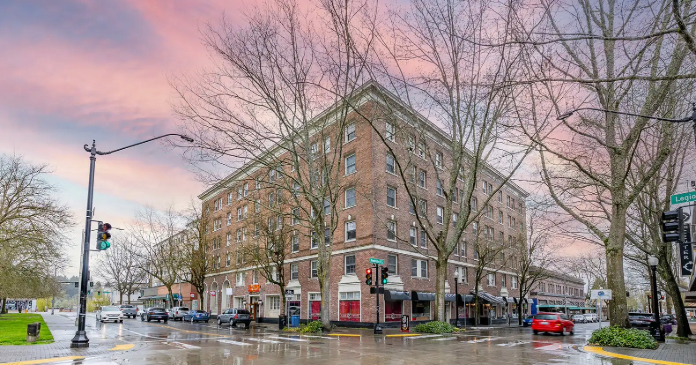As Internet technologies become more critical to residents’ business operations, how wired a community is becomes an even greater factor for prospective residents in making the decision to move in. Here are the four most critical things to know when it comes to capitalizing the tech ecosystem within your community and interfacing with those dreaded providers:
Know the players
The first step to managing the telecom and IT in your building is to get an accurate picture of the providers your community offers. Many communities have several providers available for service in their building such as telecom companies, competitive local exchange carriers (CLECs), cable companies, and fiber providers.
If you want to bring in more providers, many smaller fiber providers are willing to build to your community if there are residents willing to sign a contract with those providers. Why is having multiple providers so important?
If you only have one provider in the community, that essentially means that that provider has a monopoly over your residents, which gives the provider zero incentive to offer affordable prices or even quality service. This scenario is an enormous disadvantage to your community when it comes to attracting tech savvy residents.
Having a smaller fiber provider in the building can reduce your tenant’s telecom costs by thousands of dollars a month. That’s because more providers means more options for your resident, as well as more competition in your community in terms of price and service, and your residents will appreciate being fought over.
Know what you have to offer
Your property management team should have a crystal clear idea of the IT ecosystem within your walls. You should know which service providers are in your building, the services they provide and the prices they offer. For example, does your building offer copper, fiber, T1, or DSL services to residents? Are these services available on every floor? In every building? Top tech residents will carefully consider the IT and telecom infrastructure of your building, especially if they need to invest time and money into cabling build-outs to their floor. So having an accurate picture of your community’s providers and services is the first step to becoming a tech-friendly building. Knowing this information will make it easier for you to interface with providers and procure the best services for your residents.
Know the ins and outs
A point of entry (POE) is the location where the telecom provider’s wiring comes from the street into your building. Multiple points of entry and risers indicate that the Internet cables are coming into your property from different points on different sides of the buildings—so if something goes wrong at one entry point, another point can be used as a backup. Residents with mission-critical IT needs will require redundancy in their connectivity and having multiple points of entry into the building is one way to provide this redundancy.
With multiple entry points, your property is capable of supporting your residents’ back up connections and system critical needs.
It’s also important to know that legally, the point of entry into a building denotes a demarcation point. What’s a demarcation point? It’s something like a boundary or a border dividing the landlord’s property from the provider’s property. Technically, the wiring inside the building belongs to the landlord, and the landlord can choose to lease the wiring to the telecom providers in their building.
While you should be aware of this, if you choose to charge rent to the telecom provider, the provider will likely pass the rent onto your residents, tacking it onto their monthly telecom bill. This ends up making the services in your building more expensive, and high IT costs discourage residents who rely heavily on the Internet to run their business or job.
Know your residents’ needs
In order to keep residents happy, do your homework. It’s always a good idea to be in tune with residents, so keep the dialogue open and use surveys to determine the latest trends and services. Resident surveys are also a great opportunity to make sure they are satisfied with their ancillary services which make them more likely to stay at your community.
Surveys are also a good opportunity to conduct market research, learn what’s out there and strategize ahead. For example, if you’re looking to target a particular sector, take the time to do the advanced research. Sectors like the TAMI (Tech, Advertising, Media and Information Technology) sector and financial services sectors are skyrocketing. Those residents who require high levels of security, always-on connectivity, and fast download and upload speeds, will also require high-end fiber-based services. Know what your community offers and build a list of features and services you might like to add.
To affirm your findings, you may want to consult a company such as WiredScore. WiredScore provides a standardized rating system designed to identify, evaluate and certify commercial buildings with the fastest and most reliable Internet connections. Similar in concept to LEED (Leadership in Energy & Environmental Design) certification for energy efficiency and environmental sustainability, WiredScore evaluates a building’s connectivity by examining the number and quality of Internet service providers, as well as the bandwidth capabilities and reliability of connections based on the building’s infrastructure. Buildings that meet WiredScore’s rigorous standards are awarded a coveted Wired Certification.
Wired Certification provides owners, asset managers and leasing brokers with an added tool when leasing and marketing their properties, as well as assures prospective residents that certified buildings provide the access to the most cutting-edge, high-quality and reliable Internet services available.
The WiredScore evaluation process takes around 60 days and qualified buildings receive one of four levels of certification: Platinum, Gold, Silver or Certified.
Buildings that meet the standards and earn a Wired Certification are also promoted through WiredScore’s database, as well as data syndication through partner publications and websites like CBRE PropertyView and CoStar, the world’s largest CRE database. Properties that don’t meet minimum certification standards are offered expert recommendations on how to improve connectivity.
Today’s multifamily residents have critical connectivity needs, and if a building doesn’t meet their standards or isn’t providing clear, detailed information about the connectivity available, they’ll go somewhere else. A Wired Certified building is recognized as achieving the premier mark in broadband connectivity. Leasing agents and landlords across the nation can now use Wired Certification to market their buildings and attract and retain top residents.
Author: Aaron Meyerson is director of operations at WiredScore














